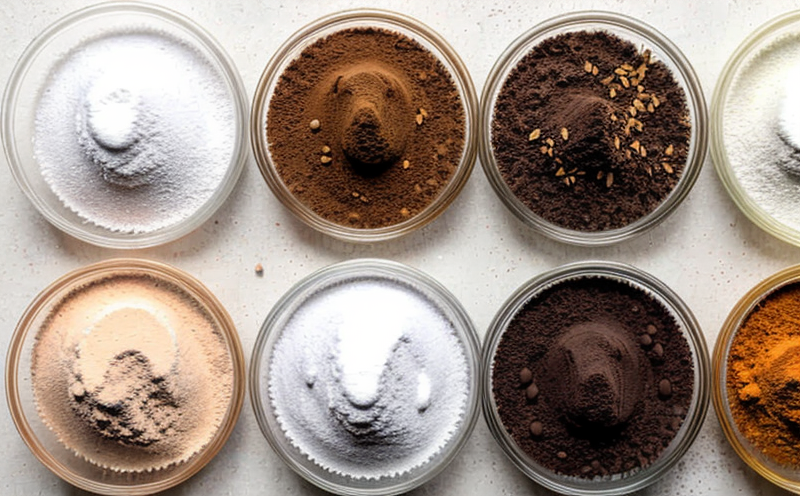ISO 25317 Carmine Quantification in Yogurt and Dairy Products
The quantification of carmine in yogurt and dairy products is crucial for ensuring product quality, compliance with regulatory standards, and consumer safety. Carmines are natural colorants derived from the cochineal insect (Dactylopius coccus), which provide a vibrant red hue to food items such as yogurts. The presence of carmine in these products can vary widely depending on formulation, sourcing, and processing methods.
ISO 25317 provides a standardized method for the quantification of carmines in dairy products like yogurt, which helps manufacturers adhere to regulatory requirements set by authorities such as the FDA (US Food and Drug Administration) or EU regulations. This ensures transparency with consumers who may have dietary restrictions or preferences related to natural ingredients.
The testing process involves several key steps including sample preparation, extraction of carmine from the product matrix, and subsequent analysis using high-performance liquid chromatography (HPLC). HPLC is preferred due to its precision in separating components based on their molecular structure. This allows for accurate quantification even when other red pigments are present.
Sample preparation typically involves homogenization of the yogurt sample followed by filtration to remove larger particles that could interfere with the chromatographic analysis. Extraction solvents like methanol or acetonitrile may be used depending on the specific requirements outlined in ISO 25317. After extraction, the solution is filtered again before injection into the HPLC instrument.
The analytical method described in ISO 25317 specifies the use of a reversed-phase HPLC column equipped with UV detection at 490 nm as this wavelength corresponds to the maximum absorbance of carmines. Chromatograms obtained from this setup are analyzed using calibration curves prepared beforehand with known concentrations of pure carmine standards.
Calibration curves serve two purposes: they enable accurate quantification of carmine in unknown samples and allow for identification through comparison against retention times observed during the analysis process. Retention time is particularly important since it directly relates to molecular weight and structure, factors that influence how quickly compounds pass through the column.
Acceptance criteria dictate what constitutes an acceptable level of carmines within a yogurt product. These limits vary according to regional regulations but generally fall between 0.1% - 2% by weight depending on local standards. Compliance with these limits ensures that products meet consumer expectations regarding color intensity and stability, while also preventing potential safety issues associated with excess consumption.
Regulatory compliance is paramount in the food industry to protect consumers from any adverse effects of consuming non-natural additives or contaminants. By adhering strictly to ISO 25317 guidelines, laboratories can provide accurate results that support ongoing quality control efforts and facilitate market access for compliant products.
In summary, quantification of carmine in yogurt through ISO 25317 offers a robust framework for ensuring product integrity. It allows manufacturers to confidently meet regulatory requirements, maintain brand reputation, and offer consumers trust in their purchases by providing consistently high-quality dairy products.
Applied Standards
| Standard Code | Description |
|---|---|
| ISO 25317:2020 | Method for the Determination of Carmines in Dairy Products |
| ASTM D6840-19a | Determination of Colorants in Food and Beverages Using High Performance Liquid Chromatography (HPLC) |
Quality and Reliability Assurance
The reliability of ISO 25317 quantification results is paramount for maintaining trust in the food industry. Quality assurance (QA) measures include rigorous training programs for analysts, regular calibration checks of instrumentation, and participation in proficiency testing schemes organized by recognized bodies.
Participating in external audits conducted by independent organizations helps ensure that laboratory procedures consistently meet international standards. Analysts undergo continuous professional development to stay updated on advancements within the field of analytical chemistry related specifically to colorant quantification.
Use Cases and Application Examples
- Dairy Product Manufacturers: To ensure consistent quality across batches, dairy companies can use ISO 25317 for internal quality control purposes. This helps them maintain uniform color consistency in their products which is essential for brand recognition.
- Regulatory Agencies: Authorities responsible for enforcing food safety laws rely on accurate quantification data provided by laboratories following ISO 25317 to enforce compliance with labeling requirements and ban illegal additives.
| Product Type | Acceptance Criteria (%) |
|---|---|
| Dairy Yogurt | 0.5 ± 0.1 |
| Cream Cheese Spread | 1 ± 0.2 |





